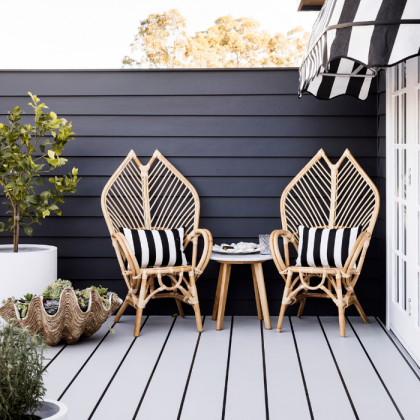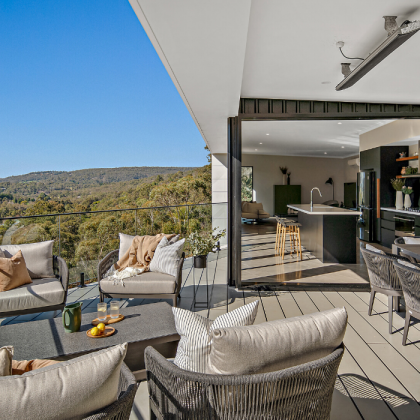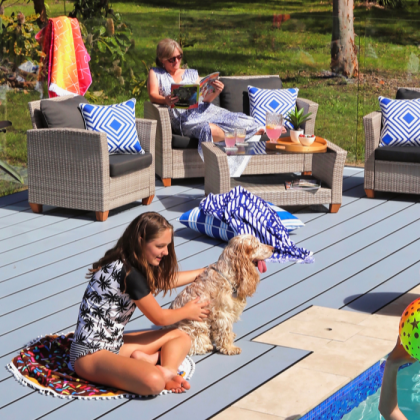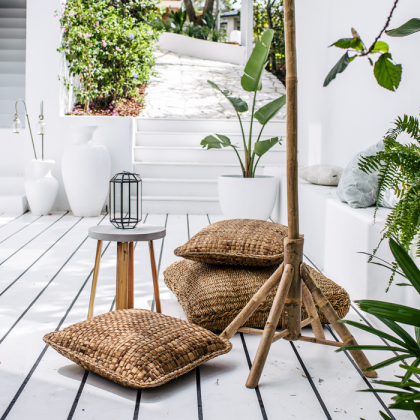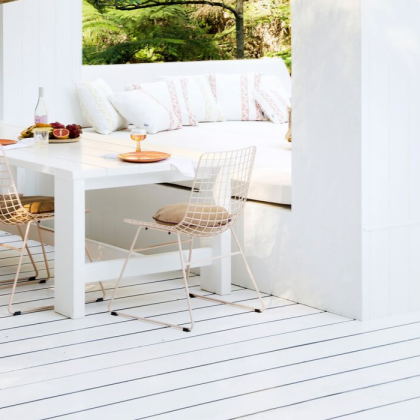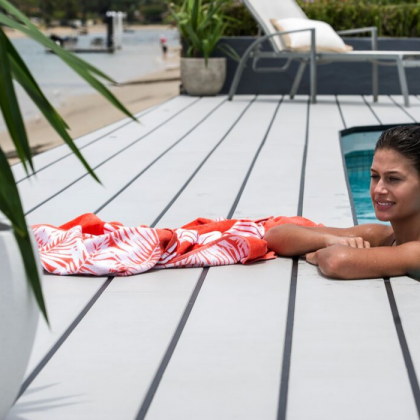While timber decking looks great, there are more important factors that come into play beyond aesthetic appeals such as safety, maintenance, and ongoing expenses.
Take a look at these four downsides of timber decking to decide whether there may be alternative materials better suited to your build.
Downside: Rotting
Exposure to water, whether it be from rain or a swimming pool, can wreak havoc on timber, which is prone to dampness, rotting and mildew. Even potted plants will need to be checked regularly to ensure mould and fungus are scrubbed from the wood underneath.
As your deck will most likely be exposed to the elements, you’ll need a plan to protect timber against rot. If you’re concerned about the time and costs involved, do some research into alternative decking options to see if a harder wearing option will better suit your lifestyle. Look into fibre cement decking which is resistant to moisture and rot, making it an ideal option for pool areas.
Over your timber deck? Call our team of experts on 13 83 53 to find out more about the HardieDeck™️ solution.

This home at Curl Curl called for a moisture-resistant decking solution like HardieDeck to replace their old timber deck.
Downside: Splintering
Timber that has been exposed to the sun for long periods of time can weaken, resulting in cracks and splintering. Because of this, timber decking may need a pergola, verandah or roof to prolong its lifespan and prevent heat damage. While potentially blowing your renovation budget, covering your deck and worrying about deterioration can also spoil the enjoyment of having an alfresco entertainment area.
For a deck that can withstand the harsh Australian climate for many years to come, an alternative such as fibre cement decking might be a better option. Families in particular will benefit from its smooth and splinter-free finish when little ones are running around barefoot.
Get your new deck before summer! Estimate the size and price of your neck deck with our online calculator tool.

Ready for an Australian summer, HardieDeck was the perfect choice for this renovation from Three Birds Renovations.
Downside: High maintenance
It is no secret that a timber deck requires a lot of maintenance to keep it looking its best. While this might suit some, busy homeowners are considering alternative materials such as fibre cement boards and wood plastic composite to save time and money on upkeep.
Find a HardieDeck supplier near you to replace your old timber deck before summer.
Even if your outdoor area doesn’t have a roof or cover, you can still enjoy a hardy and long-lasting deck without the constant concern of weakening caused by the elements. Fibre cement decking requires less re-painting and re-staining than timber, while also being resistant to termite damage – one of the most stressful and costly maintenance issues.

HardieDeck requires less painting and restaining, giving you more time to simply relax on your deck.
Downside: Limited design options
There’s no denying a brand new timber deck looks amazing. However, as time passes, it quickly loses its colour and lustre unless without a regular commitment to staining or oiling. With great alternatives available, it is worth looking into materials that provide the same look of timber while offering more flexible design options.
Fibre cement decking can be sealed with a timber stain, giving it the traditional look and feel of wood. It can also be painted any colour, allowing homeowners to achieve a seamless transition between their indoor and outdoor spaces.



